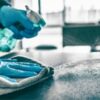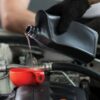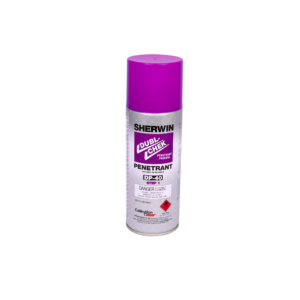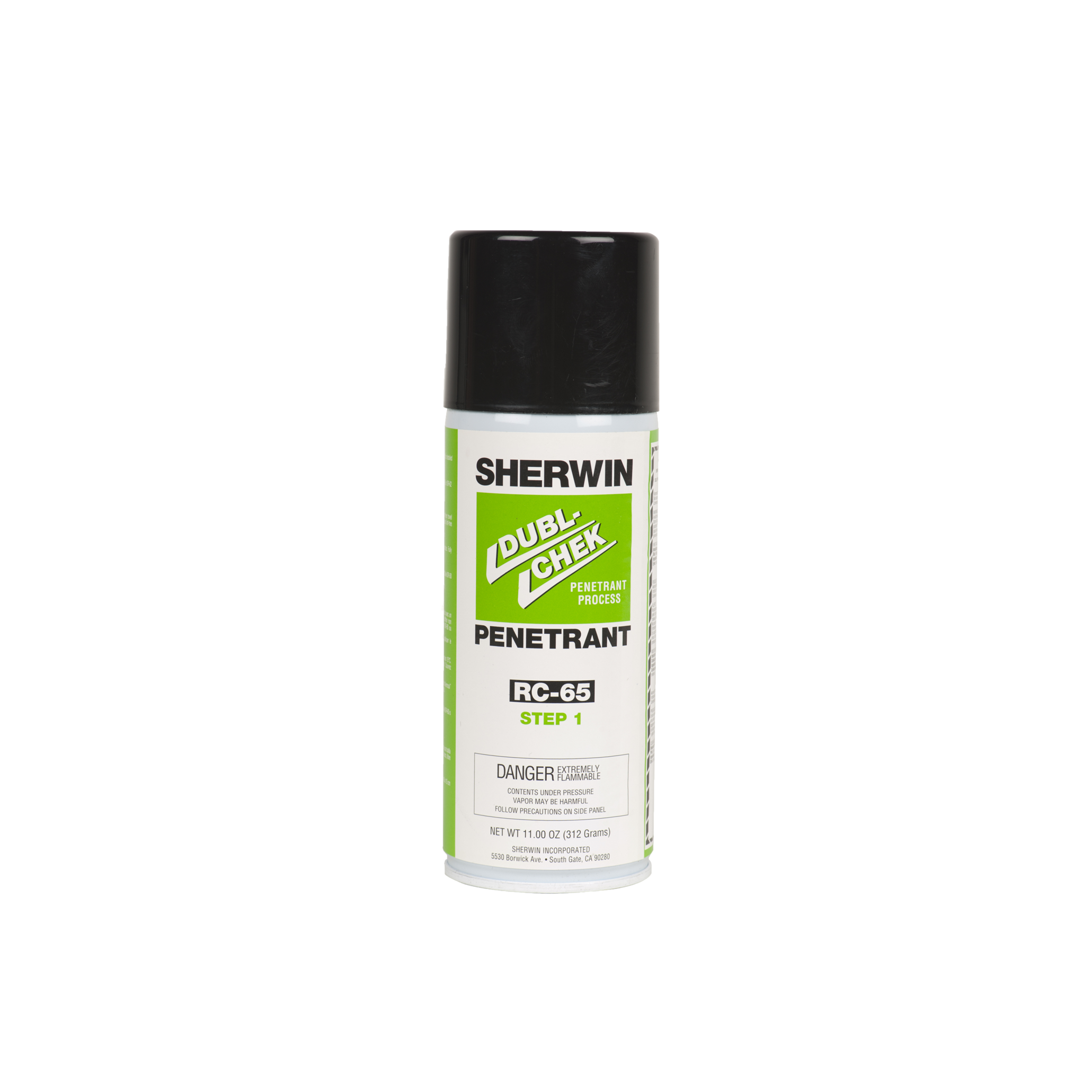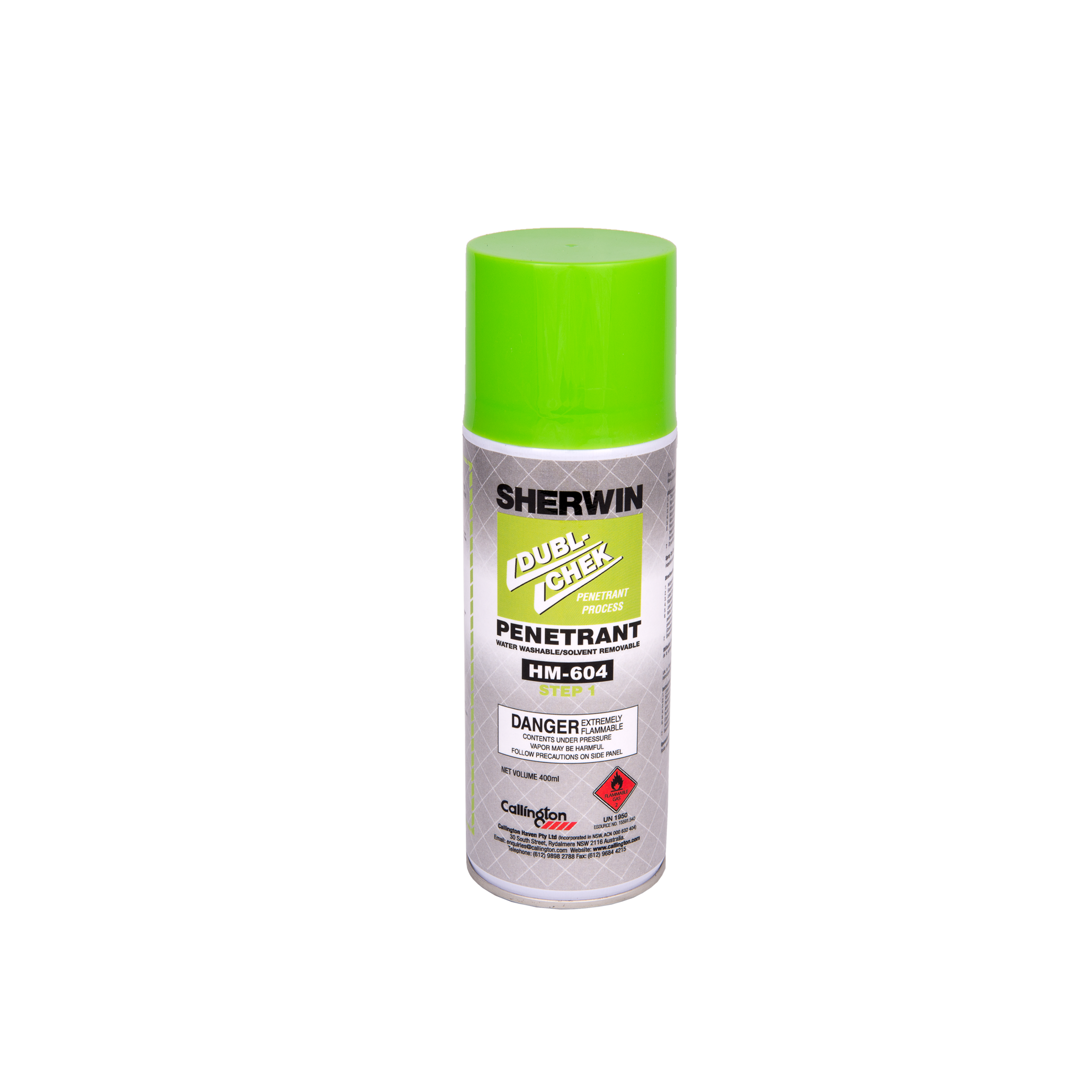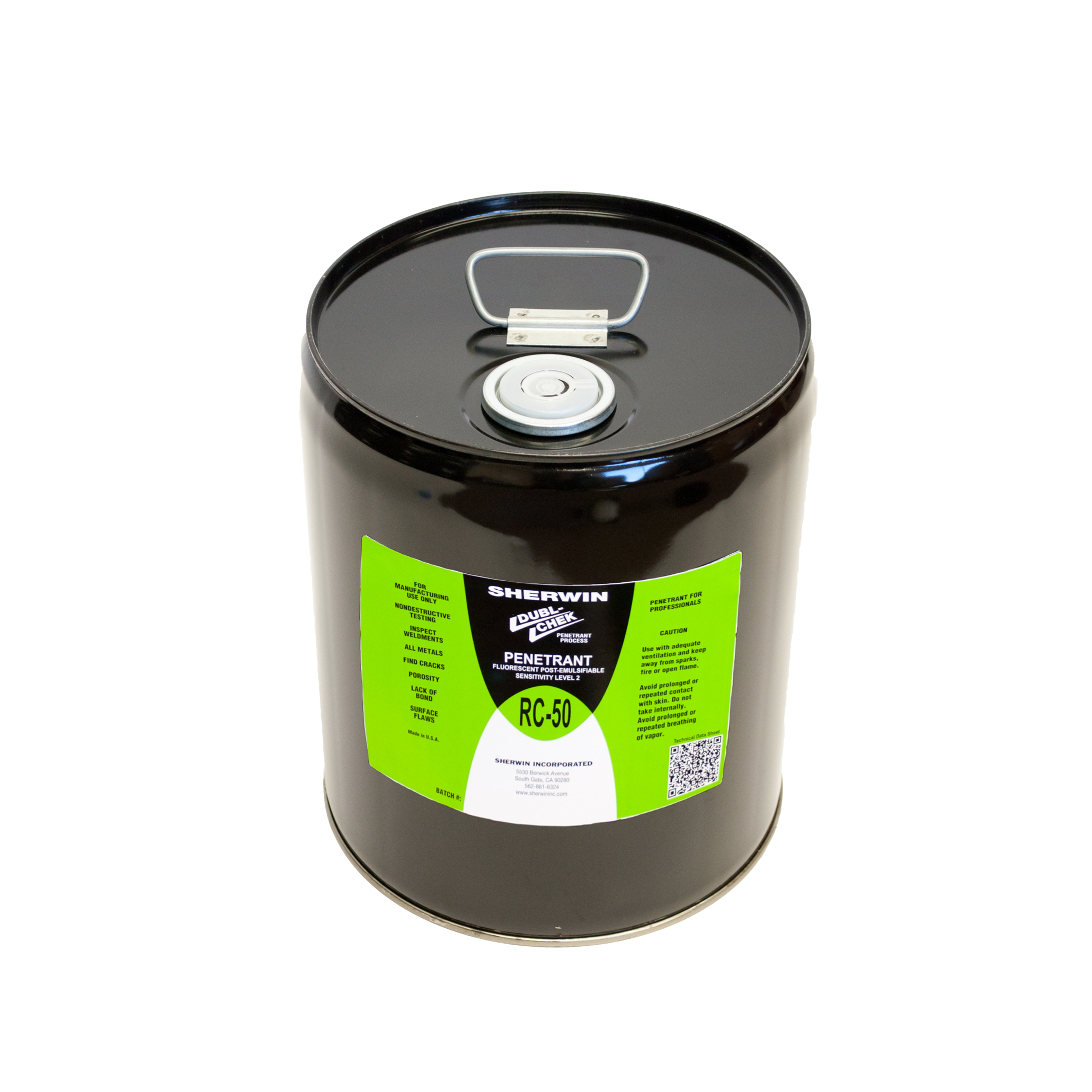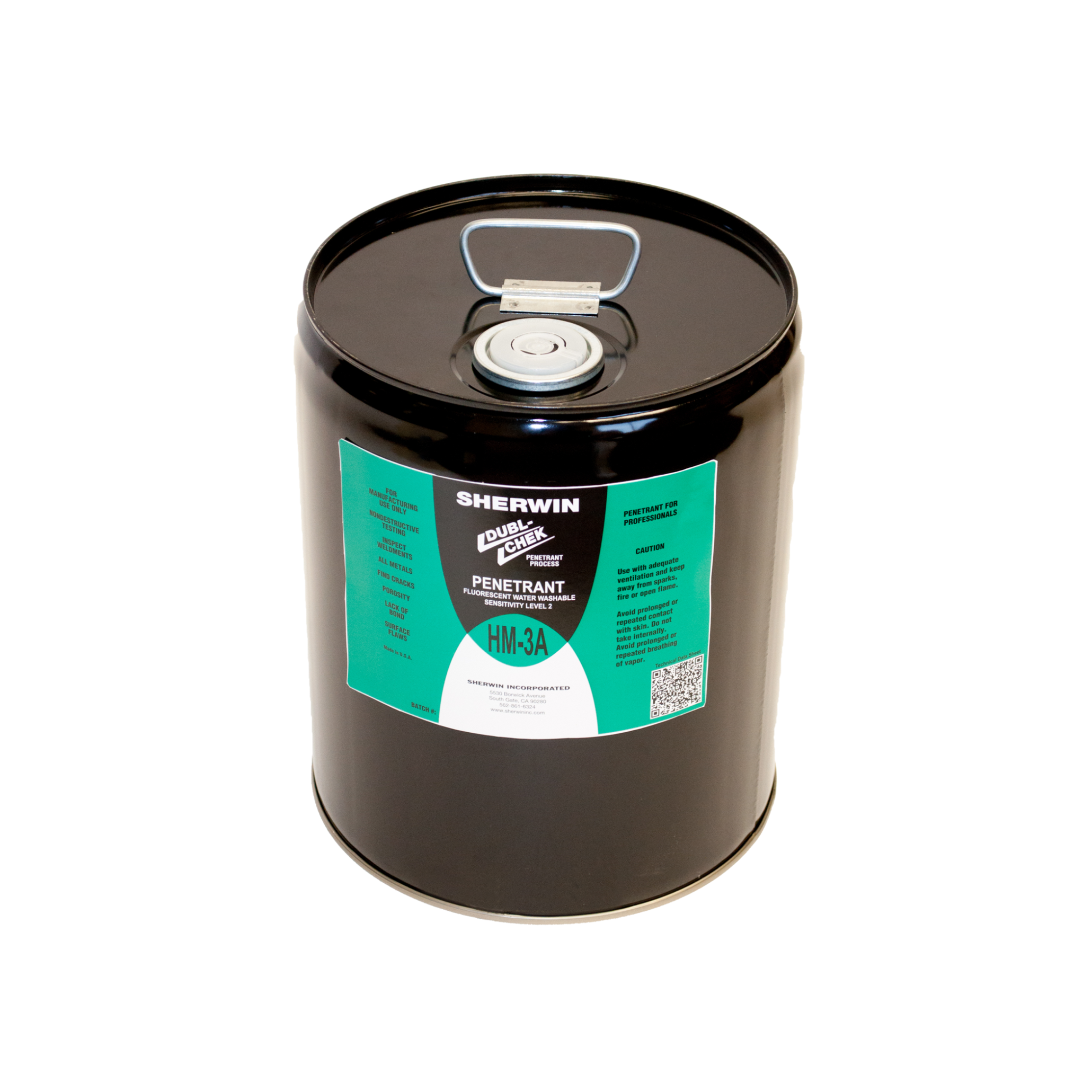DP-40 is a solvent removable, post emulsifiable visible penetrant and used to locate cracks, laps, pores, lack of bonding, and similar surface discontinuities. DP-40 can be used on nonporous parts including both ferrous and nonferrous metals, ceramics, and glass.
No information
1. Application: Apply DP-40 only to clean, dry surfaces by spraying, flowing, brushing or dipping.
2. Dwell Time: A 10-minute dwell time is suggested, although in many cases five minutes will suffice. When particularly tight cracks are suspected, or the part is especially critical, the dwell time may be extended to 30 minutes or longer. Allow the penetrant to drain from the part surface back into the penetrant tank to conserve material.
3. Removal:
a. Hydrophilic Dip Method:
i. Pre-Wash: Following the dwell, use a plain water rinse to remove most of the undrained penetrant from the surface. Use a coarse spray of ambient temperature water.
ii. Immersion: Immerse and agitate the part in 20-30% hydrophilic emulsifier solution. Immersion time and agitation time will vary with part geometry and surface condition.
iii. Rinse: Remove the part from the tank; clean with a course, plain water spray.
b. Hydrophilic Spray Method:
i. Wash: Following the dwell, use an injection of 0.1 to 5.0% emulsifier solution to wash the excess penetrant from the part surface. Time and solution concentrations will vary with part geometry and surface conditions.
ii. Rinse: Use a coarse plain water spray to remove all traces of the emulsified penetrant.
c. Lipophilic Method:
i. Emulsification: Following the dwell, dip the part into undiluted lipophilic emulsifier. Remove the part and allow the excess emulsifier to drain back into the tank. Parts with rough surfaces require longer drain times.
ii. Rinse: Use a coarse plain water spray to remove all traces of the emulsified penetrant.
d. Solvent Wipe Method: Remove as much excess penetrant as possible using a clean, lint free dry rag or towelling. Remove remaining penetrant film by wiping with a rag or towelling that has been slightly moistened with solvent. Use a minimum of solvent; avoid flushing penetrant from flaws. Do not spray solvent directly on the part surface when removing excess penetrant. Rough surfaces require more generous application of solvent.
4. Drying: A re-circulating oven set no higher than 71ºC is suggested. Leave the part in the oven just long enough to evaporate surface moisture. Drying is improved by using pressurised air to disperse and remove as much excess water as possible before placing the part in to the
When solvent remover is used, allow the surface to dry completely before applying developer.
5. Developing: Apply the developer by spray or dip using the appropriate developer. Discontinuities are visible under appropriate lighting almost immediately but, allow sufficient developing time to enhance the flaw visibility.
6. Inspection: Inspect parts under appropriate light.
• SAE AMS 2644
• QPL AMS 2644 Listing
• MIL-I-25135 Revisions C, D & E
• ASME Code NDT, Sec V AS 2062
Colour: Purple
Odour: Low petroleum smell
Viscosity: 5.76 cSt @ 37ºC
Flash Point: 110ºC
Water Tolerance: 14%
Boiling Point: 226ºC
| Code | Packaging |
|---|---|
| 1486/400 | Aerosol |
| 1486/42 | 3.8 litres (1 gallon) |
| 1486/51 | 18.9 litres (5 gallons) |
| 1486/64 | 208 litres (55 gallons) |



